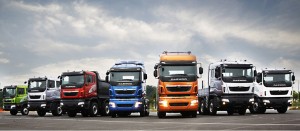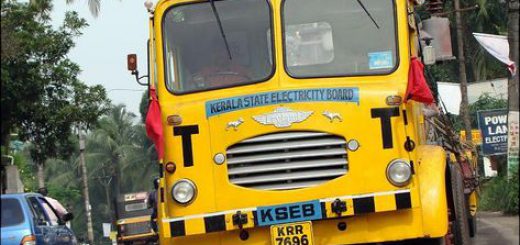Market research on heavy trucks and commercial vehicles
What is a “heavy truck”?
Medium-duty trucks range from 6 tonnes to 15.9 tonnes gross vehicle weight (GVW) and ‘heavy-duty trucks’ refers to all vehicles over 16 tonnes GVW. There are some exceptions to the rule in terms of the way in which individual manufacturers report sales and production figures, but essentially these weights categorise the type of truck produced and sold.
Manufacturers of heavy trucks:
Ashok Leyland
Beiqi Foton
Daimler Trucks
Hino
Isuzu
Iveco
MAN
Navistar International
Paccar
Scania
Tata Motors
Volvo
Heavy trucks fascinating facts
- Truck design will increasingly reflect alternative drivetrains, the quest for more environmentally-friendly fuels and changes in freight transportation patterns.
- Ashok Leyland is India’s second-largest manufacturer of medium- and heavy-duty trucks.
- Daimler Trucks is the world’s largest manufacturer of trucks over 6 tonnes GVW.
- Isuzu is the last remaining independent truck manufacturer in Japan.
- Tata Motors (Tata) is the only Indian vehicle manufacturer offering a full range of commercial vehicles, buses and engines.
- Volvo is Europe’s largest and the world’s second-largest manufacturer of heavy trucks behind Daimler.
- Four of the largest Chinese manufacturers of heavy and medium-duty trucks are Beiqi Foton, Dongfeng, FAW and CNHDTC/Sinotruck.
- The concentration of ownership into fewer hands has been a feature of the global truck market over the past decade.
- Active safety systems are increasingly becoming mandatory for commercial vehicles in most of the developed markets worldwide.
- Some mandatory truck safety systems include: electronic stability control, lane departure warning systems, automatic emergency braking systems, seat belt reminders.
Global market review of heavy trucks – forecasts to 2015
Market overview
Truck manufacturing is a relatively small segment within the automotive industry as a whole but it is one that acts as something a bell-weather for the world’s economies. The bulk of industrial and consumer goods that we all depend upon will have been transported by truck at some point in time. The transportation of freight of all kinds is a commercially-driven activity where intense competition results in narrow margins and low profitability for both manufacturers and operators. Many of the truck producers have been forced to look beyond truck manufacturing for profitability. Aftermarket sales, financial services and a diversified product portfolio are all being developed with trucks themselves often being sold as a loss-leader.
Industry consolidation
Industry consolidation has seen the large automotive groups bringing together truck brands in an effort to gain economies of scale and spread the R&D costs associated with new model development. One such example in recent times is the Volkswagen Group (VW) acquisition of a controlling stake in Sweden’s, Scania and Germany’s MAN truck companies. These two truck producers are being encouraged by VW to share components and explore product development opportunities in an effort to become more efficient and increase profitability. This is a feature of the market that will become more prevalent in the next few years.
Globalisation
The industry has witnessed the introduction of an array of “global products” in the past few years. However, there are still many barriers to the introduction of truly global trucks. Differences in technical specifications, quality and costs make it difficult to design and develop a truck that suits demand in all markets. Nevertheless, in time the technical barriers will undoubtedly be overcome as there is an alignment of manufacturing around the world which takes into account local and regional differences. Addressing the local content requirement and barriers to entry set-up to protect local producers will take a little longer to remove and will require political will as well as technological development.
Environmental pressures
looking ahead, environmental concerns will impact on all aspects of the industry and ‘well to wheel’ considerations will act as one of the main industry drivers. Vehicle design will increasingly reflect many of the changes that we see emerging now – alternative drivetrains, the quest for more environmentally-friendly fuels, changes in freight transportation patterns and the distribution of goods and services combined with legislation will all influence the way the market develops. There will undoubtedly be many more challenges to come for the industry and a period of sustained change lies ahead.
Markets
The global truck market is no longer dominated by European and North American manufacturers. Manufacturers based in the Triad markets – North America Free Trade Agreement (NAFTA) area, Europe and Japan are the undoubted technology leaders it is noteworthy that the newly-emerging Asian truck manufacturers in China and India have largely gained access to new technology from joint ventures with established market leaders in the West.
Chinese truck sales 6+ tonnes, 2006-2014 (units)
| 2006 | 2007 | 2008 | 2009 | 2010 | 2011 | 2012 | 2013 | 2014 | |
| Sales | 486230 | 623980 | 730500 | 789355 | 810535 | 830980 | 850500 | 885000 | 975000 |
Indian truck sales 6+ tonnes, 2006-2014 (units)
| 2006 | 2007 | 2008 | 2009 | 2010 | 2011 | 2012 | 2013 | 2014 | |
| Sales | 273687 | 202337 | 177398 | 236304 | 238440 | 248445 | 267455 | 291480 | 312745 |





I found the information informative, particularly the news of consolidation of VW, Scania and Man Trucks and the Chinese Truck sales figures. I am currently engaged in research on the India automotive OEM industry.
Thanks. If you have some news or useful information which you want to share with others, you can write us at info@trucksuvidha.com